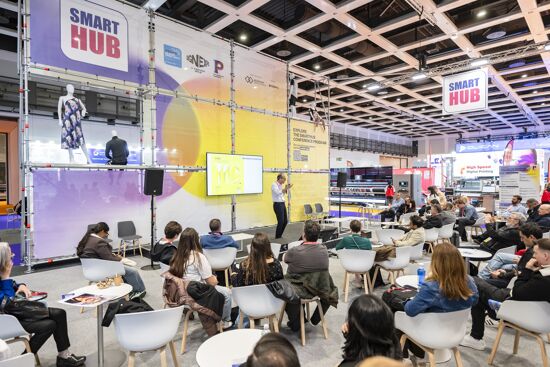The shift in climate change mitigation

Laurel Brunner discusses how sustainability has taken a prominent position amongst the customers of printers. Recently that interest has become more frequent and urgent as climate change has become more prevalent amongst political, economical and social agendas.
It’s been over ten years since we started the Verdigris project to raise environmental awareness within the worldwide graphics industry. In that time there have been sporadic flurries of interest in sustainability from printing companies, but rather more interest has come from their customers, the print buyers. But recently the flurries have started getting more frequent and urgent as climate change has jumped to the top of political and economic agendas, as well as social ones.
Why printers have been so reluctant to get with the sustainability programme is a bit puzzling. They only seem to recognise it when clients ask about what they are doing to improve sustainability and their capacity to deliver some sort of environmental sign off. As this generally has a cost attached to it, many printers embrace it as a value added extra, if indeed it is possible to deliver.
Mostly it isn’t unfortunately, which is why brand owners are starting to be a little bit more systematic in their enquiries. They want to know the environmental credentials of their print service providers, particularly for high value commissions. Often their enquiries take the form of surveys, asking service providers to answer a variety of questions about their sustainability measures and adherence to environmental standards. These are not the sort of generic surveys put out to all comers by the trade press and consultancies. Rather they are specific to a given brand’s concerns and are framed in line with the brand owner’s sustainability policies. They are also sector specific. For instance what IKEA wants to know about the environmental policies of their sign and display service providers, is not the same as what IKEA wants to know about their gravure printers‘ sustainability credentials.
The questions being asked range from the staggeringly complicated, through to the extremely simplistic. Supply chain queries are the hardest to frame because they tend to involve many unknown parties, and don’t lend themselves to binary responses. And different types of organisations use all manner of complex vendor communities. Asking the right questions can also be extremely tricky, if the responses are not to be muddled. For brand owners, identifying excellence in sustainability and environmental performance is difficult but this is what some big brands are trying to do.
Print buyers are starting to put real effort into quantifying the environmental commitments of participants in their graphic media supply chains. The goal for buyers is to be able to identify their most sustainable production options. They want to configure supply chains that share environmentally friendly practises within a common mutually supportive framework. This isn’t easy to do, but it could really help move climate change mitigation forwards.
Source Information: This article was produced by the Verdigris Project, an industry initiative intended to raise awareness of print’s positive environmental impact. This weekly commentary helps printing companies keep up to date with environmental standards, and how environmentally friendly business management can help improve their bottom lines. Verdigris is supported by the following companies: Agfa Graphics, EFI, Fespa, Fujifilm, HP, Kodak, Ricoh, Spindrift, Splash PR, Unity Publishing and Xeikon.
Interested in joining our community?
Enquire today about joining your local FESPA Association or FESPA Direct
Recent news

Industry Experts Explore the Evolution of Smart Manufacturing in the Textile Industry
A FESPA SmartHUB roundtable at Personalisation Experience 2025 discussed smart manufacturing's transformative impact on the textile industry. Experts highlighted the shift to on-demand customisation, driven by digital printing, data analytics, and automation. Key takeaways included enhanced machine control, significant waste reduction through intelligent software and colour management, and improved sustainability via energy efficiency and near-shoring, ensuring agility and environmental responsibility in textile production.

FESPA 2025 gathers leading visionaries from across the speciality print industry in Berlin
FESPA Global Print Expo 2025, European Sign Expo and Personalisation Experience (6 – 9 May 2025, Messe Berlin, Germany) welcomed Visionaries from across the speciality print industry to shape the future of print, develop forward-thinking business strategies, and explore innovative ways to translate emerging industry trends into tangible growth opportunities.

Exploring Cutting-Edge Textile Printing Innovation with Adobe Print Engine 7
Adobe PDF Print Engine 7, launched at FESPA Global Print 2025, significantly advances textile printing. Debbie McKeegan shares how it automates non-white substrate management and RGB colour handling, expands colour gamuts with in-RIP multicolour transparency blending, and streamlines workflows for efficiency and sustainability. This update boosts customisation, reduces waste, and positions businesses at the forefront of digital print innovation.

FESPA Global Print Expo 2025 - Overall Highlights
FESPA Global Print Expo, Europe's leading print and signage exhibition returned to Messe Berlin from 6 - 9 May 2025.